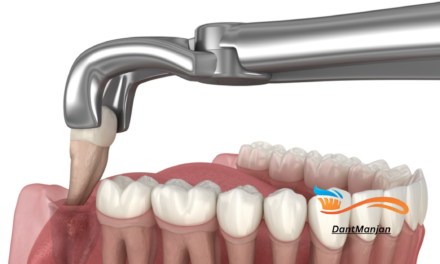In the world of dentistry, the major issue is protecting the patient, tambour and efficient delivery of treatment. This is where the dental dam comes in this insignificant material/ thing is of key importance in many dental procedures for reasons relating to patients‘ comfort as well as the productivity of the attending clinician. The focus of this paper, however, will be to draw attention to the meaning, importance and use of dental dams in modern dentistry.
What does the term Dental Dam signify?
A Dental Dam is a thin sheet that is elastic and can be made from latex, polyurethane or any other artificial substance. It looks like small rubber or plastic and is used to isolate teeth that are being treated from the rest of the mouth. Normally, it is secured with a clamp tied to close teeth.
In Dentistry, The Significance Of Dental Dams: For instance, when a dentist uses a dental dam he or she can operate in a field that is dry and free from contaminants like saliva, blood, and other materials that may disrupt treatment. This condition is especially important during dental procedures involving restoration and maintenance of tooth structure, root canal therapy, removal and prevention of gum disease, as well as treatment to the supporting structures of the teeth within the alveolar bone in which case manipulation of this area must be accompanied with control of humidity.
Increasing treatment precision can be facilitated by dental dams that isolate treatment areas. Better visibility and access for the dentist are provided by dental dams. Higher-quality restorations, root canal treatments and other dental interventions are possible due to accurate and meticulous work made easy by improved access.
Patient safety and comfort are enhanced by the use of dental dams as they not only protect the patient’s mouth against possible infection but also prevent them from inadvertently swallowing or inhaling small dental materials such as devices and tools used in this process at times. Additionally, when applied correctly a dental dam may improve discomfort during treatment by lowering chances of irritating oral mucosa since there is no need for regular rinsing.
During infection control, a dental dam acts as a divider that blocks the transmission of disease-inducing pathogens from the patient to healthcare care workers through skin contact while ensuring minimal possibility of movement across surfaces within the dental clinic which ultimately improves general dental clinic infection control procedures.
Dental Dams Uses
Dental dams are widely used in numerous dental applications as but not limited to:
In terms of restorative dentistry, dental dams are used during the placement of filling to isolate the tooth or teeth under repair to provide adequate bonding conditions for the longevity of the restoration. Dental Dams are also used in Root Canal Treatments.
Conclusion
Taking these arguments into account, it is proper to say dental dams are essential tools in the field of modern dentistry because they ensure the effectiveness of procedures, protect patients, and prevent infections. A global practice among dentists, dental dams make it possible to give excellent services as well as get good and more effective treatment results. If we take keen notice of how essential they are and learn how to use them properly; this will help us raise our level of medical attention up to the point that it is ultimate for any healthcare service rendered by us as practitioners of this profession.
FAQs
Why should you have a dental dam on whenever you are carrying out a dental procedure?
Dental dams have many functions, which are crucial during successful dental treatment. They confine the field of treatment thereby stopping it from being contaminated with saliva, blood, and other body fluids that could compromise the results of the treatment. In addition, its utilization guarantees optimal access and visibility for the dentist thus enabling him or her to conduct accurate and quick procedures and at the same time protecting the client from accidental swallowing or breathing in the dental material.
If patients who are allergic to latex have other options other than using latex dental dams?
Yes, there are other options apart from latex dental dams that can make it more comfortable for patients who have a problem with latex – for example, some dental dams are produced using different substances like polyurethane or nitrile which exclude latex completely. These substitutes offer similar protection and isolation but are harmless since they do not cause allergic reactions in individuals who are sensitive to allergens. Before doing any dental procedures, doctors must consider some things such as what type of substance a person is allergic to among others so that one has an enjoyable moment at the clinic.





